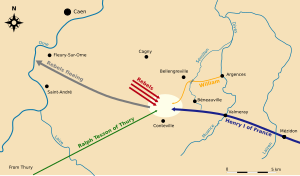The 1040s was a decade of the Julian Calendar which began on January 1, 1040, and ended on December 31, 1049.
The 1150s was a decade of the Julian Calendar which began on January 1, 1150, and ended on December 31, 1159.
The 1060s was a decade of the Julian Calendar which began on January 1, 1060, and ended on December 31, 1069.
Year 1252 (MCCLII) was a leap year starting on Monday of the Julian calendar.
Year 1124 (MCXXIV) was a leap year starting on Tuesday of the Julian calendar, the 1124th year of the Common Era (CE) and Anno Domini (AD) designations, the 124th year of the 2nd millennium, the 24th year of the 12th century, and the 5th year of the 1120s decade.
The 1050s was a decade of the Julian Calendar which began on January 1, 1050, and ended on December 31, 1059.
The 1120s was a decade of the Julian Calendar which began on January 1, 1120, and ended on December 31, 1129.
The 1130s was a decade of the Julian Calendar which began on January 1, 1130, and ended on December 31, 1139.
Year 1139 (MCXXXIX) was a common year starting on Sunday of the Julian calendar.

Year 1050 (ML) was a common year starting on Monday of the Julian calendar.

Year 1060 (MLX) was a leap year starting on Saturday of the Julian calendar.
The 1260s is the decade starting January 1, 1260 and ending December 31, 1269.
Year 1213 (MCCXIII) was a common year starting on Tuesday of the Julian calendar.
Year 1235 (MCCXXXV) was a common year starting on Monday of the Julian calendar.
Year 1159 (MCLIX) was a common year starting on Thursday of the Julian calendar.

Year 1241 (MCCXLI) was a common year starting on Tuesday of the Julian calendar.

Year 1260 (MCCLX) was a leap year starting on Thursday of the Julian calendar.
David Bates is a historian of Britain and France during the period from the tenth to the thirteenth centuries. He has written many books and articles during his career, including Normandy before 1066 (1982), Regesta Regum Anglo-Normannorum: The Acta of William I, 1066–1087 (1998), The Normans and Empire (2013), William the Conqueror (2016) in the Yale English Monarchs series and La Tapisserie de Bayeux (2019).
Siward Barn was an 11th-century English thegn and landowner-warrior. He appears in the extant sources in the period following the Norman Conquest of England, joining the northern resistance to William the Conqueror by the end of the 1060s. Siward's resistance continued until his capture on the Isle of Ely alongside Æthelwine, Bishop of Durham, Earl Morcar, and Hereward as cited in the Anglo-Saxon Chronicle. Siward and his confiscated properties in central and northern England were mentioned in Domesday Book, and from this it is clear that he was one of the main antecessors of Henry de Ferrers, father of Robert de Ferrers, the first Earl of Derby.
Lagmann mac Gofraid may have been an early eleventh-century ruler of the Kingdom of the Isles. He seems to have been a son of Gofraid mac Arailt, King of the Isles, and was likely a member of the Uí Ímair kindred. According to mediaeval sources, Lagmann was closely associated with Óláfr Haraldsson, a future King of Norway. According one source, both men lent assistance to Knútr, son of Sveinn Haraldsson, King of Denmark, although it is possible that this account actually refers to Óláfr's campaigning in England several years beforehand. Lagmann and Óláfr are also recorded to have assisted Richard II, Duke of Normandy. The two are specified to have not only ravaged lands in Brittany on behalf of Richard, but were tasked to counter Richard's opponent Odo II, Count of Chartres. Lagmann's activities on the Continent may have arisen as a result of being forced from the Isles following the death of his possible brother Ragnall mac Gofraid, King of the Isles in 1004 or 1005. Lagmann's son, Amlaíb, is recorded to have perished at the Battle of Clontarf in 1014. If Lagmann died at about this time as well, it could account for the record of Hákon Eiríksson assuming control of the Isles.




